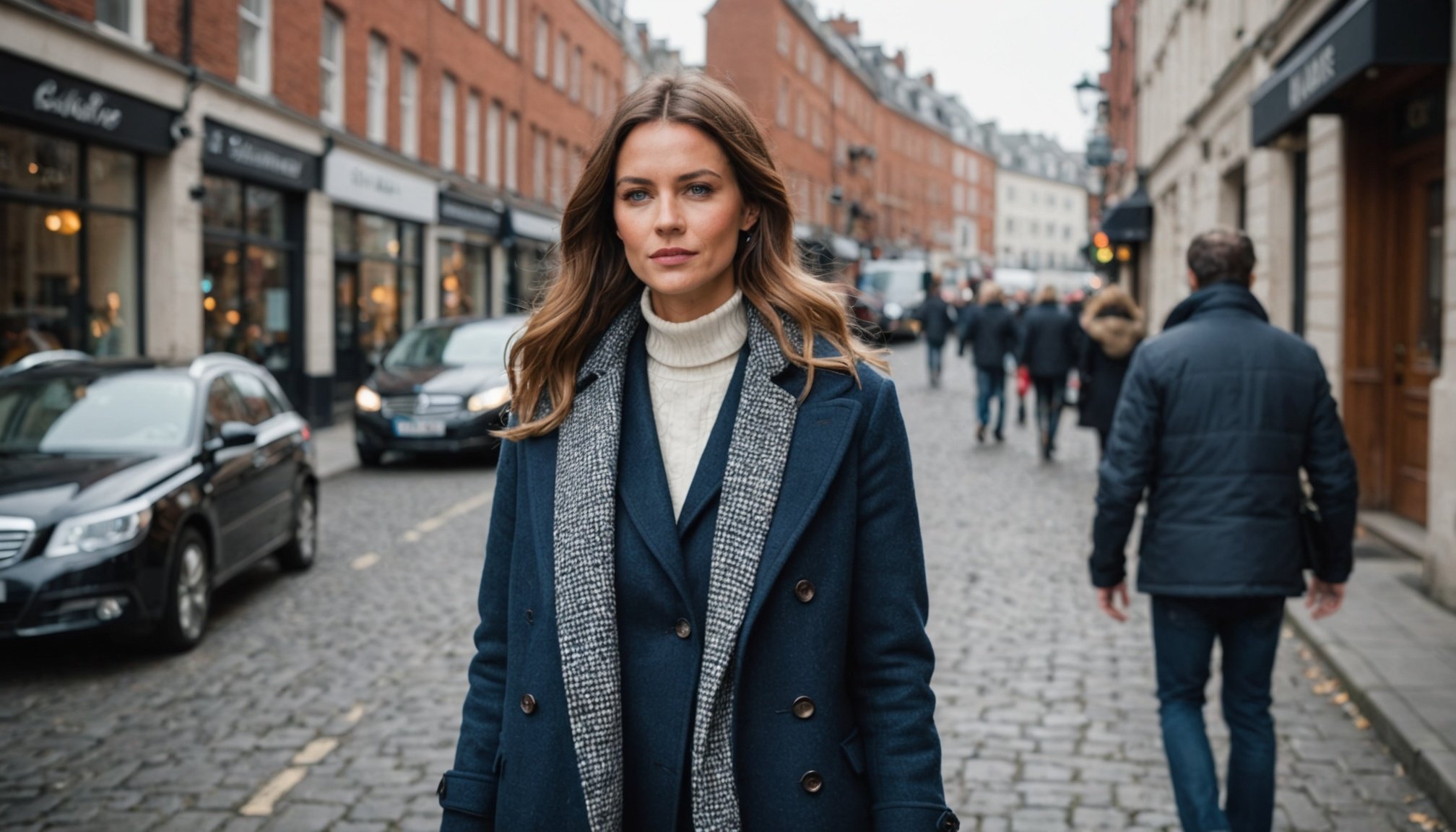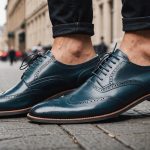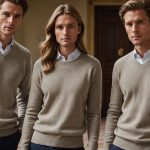Understanding Layering Essentials
Layering is a cornerstone of any winter wardrobe, serving both practical and stylistic purposes. Mastering the art of layering involves more than just stacking clothes; it’s about ensuring warmth, comfort, and style cohesively.
Importance of Layering for Warmth and Style
Layering techniques are crucial for retaining heat while allowing you to adapt to fluctuating temperatures throughout the day. By using the right layering techniques, you can stay warm without sacrificing style.
This might interest you : The Ultimate Guide to Choosing Top Eco-Friendly Winter Coats in the UK
Key Principles of Effective Layering
- Start with a base layer: Opt for moisture-wicking materials to keep sweat away.
- Add an insulating mid-layer: Wool or fleece work well to trap heat.
- Finish with an outer layer: Choose something weather-resistant to shield against elements.
Understanding these principles is key to effective layering.
Essential Clothing Items for Layering
To build an exemplary winter wardrobe, consider the following essentials:
In parallel : Easy hacks to revamp your summer wardrobe into a gorgeous fall fashion ensemble on a budget
- Base layers: Thermal tops and leggings
- Mid-layers: Sweaters, vests, and fleeces
- Outer layers: Coats and jackets
- Accessories like scarves and hats to add both warmth and flair
By combining these essentials with layering techniques, you can create a versatile and functional winter wardrobe that meets both warmth and aesthetic needs.
Mixing Textures for Depth
The art of combining textures can elevate your winter wardrobe essentials by adding both visual interest and tactile appeal. Texture combinations in fabric layering transform basic outfits into dynamic ensembles. Using different materials enhances an outfit by creating a rich sensory experience.
How Different Textures Enhance an Outfit
Textural diversity, such as pairing the softness of a cable-knit sweater with the sheen of a leather jacket, provides contrast and depth. Subtle differences, like a velvet scarf against a structured wool coat, draw the eye and offer warmth without adding bulk.
Best Fabric Choices for Winter Layering
Incorporating varied materials is essential. Wool, cashmere, and flannel serve as solid bases for warmth. Introduce textures like velvet or silk for a touch of luxury in your fabric layering mix. These choices not only offer heat retention but also adaptability to winter’s harsh conditions.
Tips for Balancing Textures Without Overwhelming
To avoid texture overload, limit yourself to three different textures in one outfit. This keeps your look polished yet intriguing. Begin with a neutral base layer and layer on complementary textures for a balanced appearance. Consider using accessories, such as a felt hat or knit gloves, to subtly introduce additional textures.
Seasonal Trends in Winter Fashion
Incorporating the latest winter fashion trends into your wardrobe can refresh your style and keep you aligned with the season’s vibe. Seasonal layering offers a practical way to stay chic and warm.
Current Color Palettes
This year, muted earthy tones and jewel tones dominate the winter color palette. Rich hues like emerald and burgundy bring warmth, while softer shades like taupe add a touch of elegance to any ensemble. Incorporating these colors into your seasonal layering can enhance your outfit’s aesthetic.
Popular Layering Silhouettes
This winter, oversized silhouettes and structured pieces are trending. Long, chunky cardigans layered over fitted turtlenecks provide a balanced look. Trench coats and puffer jackets also add dimension and sophistication.
Must-have Accessories for Winter
Accessories are crucial in embracing winter fashion trends effectively. Look out for statement scarves in bold patterns and chunky-knit beanies for both warmth and style. Leather gloves and oversized belts can accentuate your seasonal layering, giving your outfit a polished finish.
Outfit Inspirations
Embrace the chill with these winter outfit ideas, expertly crafted to blend style with warmth. By exploring stylish layering looks, you can transform your winter wardrobe into a versatile collection fit for any occasion.
Examples of Versatile Layered Outfits
A classic combination to consider includes a tailored turtleneck paired under a houndstooth blazer, topped with a wool overcoat. This mix balances comfort and sophistication, suitable for office meetings or brunch. For weekends, think of layering a chunky-knit sweater over a cotton shirt, finished with a denim jacket.
How to Adapt Outfits for Various Occasions
To transition from day to night, swap your casual jacket for a structured coat; change sneakers for heeled boots. Opt for a silk scarf to dress up the ensemble. Adaptability is key in winter outfit ideas, ensuring readiness for spontaneous plans.
Celebrity and Influencer Winter Looks for Inspiration
Celebrities like Gigi Hadid and influencers such as Chiara Ferragni showcase stylish layering looks on Instagram. From oversized parkas paired with athleisure to sleek trench coats over utility-chic trousers, their choices inspire trendy yet practical winter dressing. Following these examples helps refine your style, keeping your wardrobe chic yet functional.
Step-by-Step Layering Guide
Navigating the complexities of a layering strategy can be daunting, but breaking it down step by step makes it manageable. This winter outfit guide is designed to optimise warmth, style, and functionality.
How to Start with a Base Layer
Beginning with a solid base layer is crucial; this foundation should be made of moisture-wicking fabrics. Materials, such as merino wool or synthetic blends, are ideal as they offer both warmth and dryness by effectively managing sweat. For a streamlined look, opt for neutral tones—ensuring compatibility with multiple mid-layers.
Incorporating Mid-Layers for Added Warmth
Move to your mid-layer next. Think materials that trap heat, such as fleece or down. These items add necessary insulation without overwhelming bulk, maintaining silhouette integrity. For versatility, a zip-up fleece or a wool sweater are excellent choices, allowing flexible combinations with both casual and formal settings.
Choosing Outer Layers for Style and Functionality
Finally, an outer layer should shield against elements while supporting your overall aesthetic. Options like down parkas or a stylish trench coat offer both warmth and a polished appearance. Always consider weather resistance and compatibility with your other layers. Select neutral shades to enhance wardrobe adaptability.
Visual Examples and Checklists
Navigating the complexities of fashion can be easier with visual aids and checklists, serving as practical tools during wardrobe planning and outfit assembly.
Importance of Visual Learning in Fashion
Understanding fashion concepts like layering techniques and winter wardrobe basics becomes intuitive through visual learning. Infographics and style guides illustrate how to combine different pieces effectively, offering a clear, visual roadmap to achieving desired looks. By seeing examples, individuals can better grasp how textures, colours, and silhouettes work together in an ensemble.
Creating a Winter Wardrobe Checklist
Crafting a comprehensive checklist aids in ensuring all essential items are present for creating stylish layers. A checklist might include:
- Moisture-wicking base layers
- Insulating mid-layers like sweaters or vests
- Weather-resistant outer layers
This structured approach ensures versatility and functionality in every outfit, covering warmth and aesthetic needs comprehensively.
Infographics Illustrating Layering Techniques
Infographics can break down complex layering techniques into digestible steps. These visual guides often detail how to mix and match clothing items, considering fabric combinations and wardrobe essentials. By illustrating these processes, fashion becomes more accessible, enabling individuals to build cohesive, adaptable winter outfits confidently.










